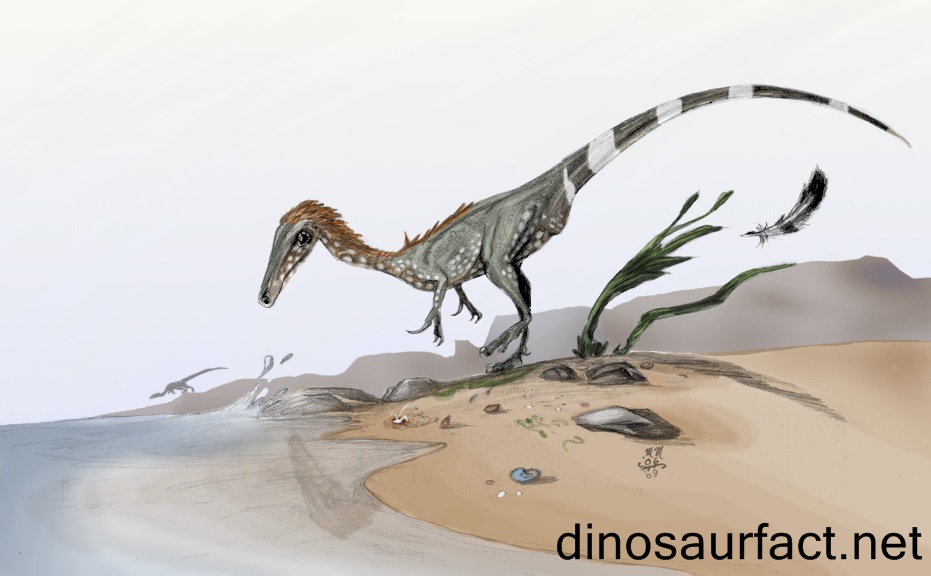The Juravenator |
 Juravenator – The Beautiful Tiny Dinosaur Juravenator is a type of small ceelurosaurian dinosaur, which was known to have lived in the Jura Mountains of Germany about 150 million years ago. The term Juravenator was derived from the Greek and the meaning of term is Jura Mountains hunter. The term is pronounced as Joor-ah-ven-ate-or. It is known to have belonged to the Jurassic Era. Juravenator is known to have been two feet (i.e.) 70 cm long. It would have weighed around 300 grams. It was found that the food habit of Juravenator would have included insects and fish. Juravenator was regarded as the member of Compsognathidae family, which makes it a close relative of sinocalliopteryx and sinosauropteryx. The fossil evidence of Juravenator showed that it would have had a downy, feather like covering. But, some parts of fossilized Juravenators' skin demonstrate that it would have been a normal dinosaur without any feathers. According to Mark Norell, a paleontologist suggested the following facts about Juravenator: • Like some partially feathered birds, Juravenator might have got feathers in some parts of the body. But, initially it might have had full feathers. • The Juravenator might have lost their feather as they grow up or they might have lost some feathers seasonally. The reports regarding Juravenator differed from initial study and further studies. During the initial study the scientists placed Juravenator under the category of compsognathids. But, later studies showed that Juravenator was not a compsognathids and it belonged to the Maniraptora group. As far as feathers of Juravenators' are concerned, it is not actually known whether they had feathers or not. Juravenators are regarded as the tiniest dinosaur and it belongs to the Animalia kingdom, chordate phylum, reptilia class and saurischia order. Juravenators were called with the nick name ‘borsti'. The skin impression from the tail area of this dinosaur showed that it would have had a scaly hide. The remains of the Juravenator were found from Southern Germany and with the help of these remains, questions were raised among the scientists regarding how feathers evolved from dinosaurs to bird. According to researchers, Juravenator would have had a similar appearance of the fleet-footed carnivorous dinosaurs that troubled a young girl on the beach in the opening scene of the film ‘the lost world' and this type of dinosaur also appeared in the second Jurassic park movie. Some researchers say that the well-preserved bone structure of the Juravenator shows that it would have had feathers like other feathered dinosaurs since all the close relatives of this dinosaur was known to have had feathers. But, some researchers have a different idea that the small patch of skin from the tail of the creature shows no signs of feathers. The second group also argues that the skin of Juravenator is different from other feathered dinosaurs. So, it was feather less. Since the researchers could not arrive at a conclusion regarding the feathers of Juravenator. They concluded that they might have lost their feathers as age advances, initially they might have had feathers, but they might have lost their feathers later. |
welcome to my dinos you are going to look at dinosaurs that can fly,swim and walk.have fun!
miércoles, 30 de diciembre de 2009
Suscribirse a:
Enviar comentarios (Atom)
No hay comentarios:
Publicar un comentario